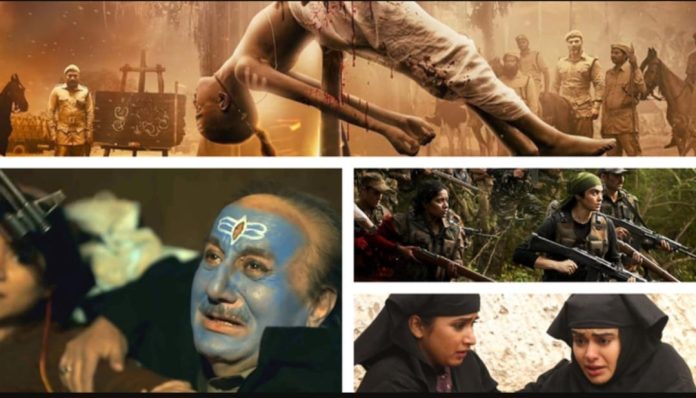– Ayesha Sultana
In the midst of India’s cinematic landscape, a notable trend is emerging – the surge of government-friendly films hitting the silver screen, particularly as the nation gears up for impending general elections. This intriguing intersection of politics and cinema has sparked both anticipation and controversy, as filmmakers delve into narratives aligned with the ruling ideology.
A recent example of this phenomenon is the release of “Swatantra Veer Savarkar” on March 22, which immediately sparked heated debate. Actor-director Randeep Hooda ignited controversy with his assertion that had Vinayak Damodar Savarkar’s vision prevailed, India would have gained independence 35 years earlier. Hooda’s statement drew sharp criticism, notably from Tushar Gandhi, the great-grandson of Mahatma Gandhi, who denounced it as a “fictionalization of history.”
Historian Aditya Mukherjee weighed in, highlighting Savarkar’s significance as a key figure in the development of Hindutva ideology. He pointed out the audacity of pitting Savarkar against the revered Mahatma Gandhi, emphasizing that during the period preceding Independence, Gandhi’s activism had not yet reached its zenith, with his first major mass movement, the Champaran Satyagraha, occurring in 1917, while Savarkar languished in jail.
This juxtaposition of perspectives underscores the contentious nature of these government-friendly films, which often seek to shape historical narratives in alignment with prevailing political ideologies. The portrayal of historical figures and events in such productions inevitably invites scrutiny and debate, as differing interpretations of India’s past collide on the big screen.
However, behind the cinematic spectacle lies a darker reality – the phenomenon of saffronization and polarization within Indian society. As these government-friendly films gain prominence, they contribute to a broader narrative of cultural and ideological homogenization, often at the expense of minority voices.
The Muslim minority, in particular, finds itself marginalized and misrepresented in these narratives, further exacerbating existing socio-political tensions. The focus on saffronization, or the promotion of Hindu nationalist ideology, reinforces divisions within society and deepens the sense of alienation among minority communities.
Among the notable releases contributing to this trend are “Razakar,” “Bastar – The Naxal Story,” “The Kerala Story,” and “The Kashmir Files,” each offering its own interpretation of contentious socio-political issues. As these films capture public attention, they not only entertain but also serve as potent tools for shaping public opinion and influencing political discourse.
As the cinematic landscape continues to evolve, the intersection of politics and cinema remains a fertile ground for exploration, offering filmmakers a platform to engage with historical narratives and ideological debates. However, as controversies like the one surrounding “Swatantra Veer Savarkar” demonstrate, the portrayal of sensitive historical figures and events carries profound implications, inviting scrutiny and sparking impassioned dialogue among audiences and experts alike. In navigating this complex terrain, it is essential to recognize and address the broader implications of saffronization and polarization, ensuring that diverse voices and perspectives are given space to be heard and valued.




